Red River Cave |
||||||||||||||||||||||||||||
 |
 |
|||||||||||||||||||||||||||
Crocheted top in DROPS Safran. Piece is crocheted top down with round yoke and lace pattern. Size XS–XXL.
DROPS 223-28 |
||||||||||||||||||||||||||||
|
------------------------------------------------------- EXPLANATION FOR THE PATTERN: ------------------------------------------------------- CROCHET TIP FOR CHAIN STITCH: If you work at the end of crochet hook the chain stitch will often be too tight. 1 chain stitch should be just as long as 1 double crochet/double crochet is wide. CROCHET INFORMATION: At beginning of every round with double crochets work 3 chain stitches. These chain stitches do not replace 1st double crochet but are worked in addition to stitches on round. PATTERN: See diagrams A.1 to A.4. INCREASE TIP (evenly): To calculate how to increase evenly, count the stitches to be increased (e.g. 94 stitches), and divide by stitches of increases to be done (e.g. 18) = 5.2. In this example increase by working 2 double crochets in approx. every 5th stitch. DECREASE TIP: Decrease 1 double crochet by working the next 2 double crochets together as follows: Work 1 double crochet but wait with last pull through (= 2 stitches on hook), then work next double crochet but on last pull through pull yarn through all 3 stitches on hook. ------------------------------------------------------- START THE PIECE HERE: ------------------------------------------------------- TOP - SHORT OVERVIEW OF THE PIECE: Work yoke in the round, top down. Now divide yoke for body and sleeves. Work body in the round, top down. Work sleeve edges in the round, top down. NOTE: It is important to keep the crochet gauge vertically so that the measurements on yoke will be correct. YOKE: Work 95-103-103-109-109-115 chain stitches - read CROCHET TIP FOR CHAIN STITCH on hook size 4 MM = US 6 with Safran and form 1 ring with 1 slip stitch in first chain stitch. Work 3 chain stitches - read CROCHET INFORMATION, then work 1 double crochet in each of the 94-102-102-108-108-114 chain stitches and increase at the same time 18-22-22-28-40-46 double crochets evenly - read INCREASE TIP = 112-124-124-136-148-160 double crochets. Now insert 4 marker threads in the piece as follows: 1st marker thread: Insert 1st marker thread at beginning of round. 2nd marker thread: Skip the next 16 stitches, insert 2nd marker thread here. 3rd marker thread: Skip the next 40-46-46-52-58-64 stitches, insert 3rd marker thread here. 4th marker thread: Skip the next 16 stitches, insert 4th marker thread here. 40-46-46-52-58-64 stitches remain on round after last marker thread. Move the marker threads upwards when working. They should be placed directly before every repetition of A.2 on round, and they are used when increasing evenly. Now work pattern and increase as follows: A.1 shows how round begins and ends. Work A.2 over the first 4 double crochets, A.3 over the next 12 double crochets (= 2 repetitions of 6 stitches), A.2 over the next 4 double crochets, work A.3 over the next 36-42-42-48-54-60 double crochets (= 6-7-7-8-9-10 repetitions of 6 stitches), A.2 over the next 4 double crochets, A.3 over the next 12 double crochets, A.2 over the next 4 double crochets, A.3 over the last 36-42-42-48-54-60 double crochets. REMEMBER THE CROCHET GAUGE! Continue the pattern in the round like this while increasing evenly: On 6th round in pattern increase as follows: Work * A.2 as before, work A.3 until next marker thread and increase at the same time 0-6-6-6-6-6 double crochets evenly – remember INCREASE TIP (= 12-18-18-18-18-18 stitches), work A.2 as before, work A.3 until next marker thread and increase at the same time 6-6-12-12-12-12 stitches evenly (= 42-48-54-60-66-72 stitches) *, work from *-* 1 more time on round (= 12-24-36-36-36-36 stitches increased) = 180-204-216-228-240-252 stitches on round. In size XS, S and M continue from ALL SIZES below. In size L, XL and XXL increase as follows: On 10th round in pattern increase as follows: Work * A.2 as before, work A.3 until next marker thread and increase at the same time 6-6-6 stitches evenly (= 24-24-24 stitches), A.2, work A.3 as before until next marker thread and increase at the same time 6-6-6 double crochets evenly (= 66-72-78 stitches) *, work from *-* 1 more time on round (= 24-24-24 stitches increased) = 288-300-312 stitches on round. ALL SIZES: Work until A.2 has been worked vertically. On last round in A.2 insert 1 new marker thread in the middle of each A.2 (i.e. 18 double crochets on each side of marker thread in each of the 4 repetitions with A.2). Remove the old marker threads (= 4 marker threads remain in piece). Stitches between marker threads mark transition between front/back piece and sleeves (= 48-54-54-60-60-60 double crochets on each sleeve). There are now 252-276-288-324-336-348 double crochets on round. Now work with pattern as follows: A.4 shows how round begins and ends. Continue with A.3 in the round, and over the 36 double crochets in A.2 work 6 repetitions of A.3. When A.3 has been worked vertically 1 time, repeat pattern A.3a vertically. Work like this until piece measures 20-20-22-24-26-28 cm = 8"-8"-8¾"-9½"-10¼"-11" from the beginning of the yoke – adjust to finish after 1st, 3rd, 7th, 12th or 13th round in A.3a! This is done to make it easier to work pattern on body and sleeves. Now divide piece for body and sleeves. Work next round as follows: Work A.3a until first marker thread (= 3 repetitions for back piece), work 8-8-8-10-10-10 chain stitches, skip stitches between the 2 marker threads (= 8-9-9-10-10-10 repetitions for sleeve), work A.3a until next marker thread (= 13-14-15-17-18-19 repetitions for front piece), work 8-8-8-10-10-10 chain stitches, skip stitches between the 2 marker threads (= 8-9-9-10-10-10 repetitions for sleeve), work A.3a the rest of the round (= 10-11-12-14-15-16 repetiotions - There are now 13-14-15-17-18-19 repetitions for back piece). Cut and fasten the yarn. BODY: Start in the 5th chain stitch of the 8-8-8-10-10-10 chain stitches under the sleeve in one side. Work 3 chain stitches - remember CROCHET INFORMATION, work 1 double crochet in the same chain stitch. Now work 1 double crochet in each of the next 3-3-3-5-5-5 chain stitches, work A.3a as before until chain stitches under the second sleeve, 1 double crochet in each of the 8-8-8-10-10-10 chain stitches below sleeve. Work A.3a as before until chain stitches under sleeve, work 1 double crochet in each of the last 4-4-4-4-4-4 chain stitches under sleeve = 172-184-196-224-236-248- stitches. Work the 8-8-8-10-10-10 stitches under sleeve in double crochets. Insert 1 marker in the piece. NOW MEASURE PIECE FROM HERE! On first round in A.3a worked with double crochet decrease 4-4-4-2-2-2 double crochet evenly – read DECREASE TIP = 168-180-192-222-234-246 stitches. Then work A.3a in the round (= 28-30-32-37-39-41 repetitions on round). Repeat A.3a vertically. When piece measures 12 cm = 4¾", adjust so that next row is with double crochets, decrease 6 double crochets evenly = 162-174-186-216-228-240 double crochets. Now repeat A.3a 27-29-31-36-38-40 times on round. When piece measures 20-21-22-23-24-25 cm = 8"-8¼"-8¾"-9"-9½"-9¾" from marker – adjust so that next round is with double crochet, increase 6 double crochets evenly – read INCREASE TIP. Repeat increase on each of the next 3 rows with double crochets (= 24 stitches increased) = 186-198-210-240-252-264 double crochets. Repeat A.3a 1 more time in width on every increase. When all increases are done, repeat A.3a 31-33-35-40-42-44 times in width. Work until piece measures 34-36-36-36-36-36 cm = 13⅜"-14¼"-14¼"-14¼"-14¼"-14¼" from division – adjust to finish after a round with double crochets. Cut and fasten the yarn. Top measures approx. 54-56-58-60-62-64 cm = 21¼"-22"-22¾"-23⅝"-24⅜"-25¼" from shoulder and down. SLEEVE EDGES: Begin in the 4th chain stitch of the 8-8-8-10-10-10 chain stitches under sleeve. Work 3 chain stitches - remember CROCHET INFORMATION, work 1 double crochet in the same chain stitch. Then work 1 double crochet in each of the next 4-4-4-6-6-6 chain stitches, work next row in A.3a (i.e. a row with double crochets) until 3 chain stitches remain on row, work 1 double crochet in each of the last 3 chain stitches. Now 1 row with double crochets and 1 row with double crochets/chain stitches remain - work if desired 1 double crochet in every double crochet until desired length. Work 1 round with 1 double crochet in every double crochet and decrease at the same time 10-10-8-10-6-4 double crochets evenly = 46-52-54-60-64-66 double crochet. Work * 1 double crochet in first/next double crochet, 1 chain stitch, skip approx. 1 cm = ⅜" *, work from *-* around the entire sleeve. Cut and fasten the yarn. Work the other sleeve the same way. |
||||||||||||||||||||||||||||
Diagram explanations |
||||||||||||||||||||||||||||
|
||||||||||||||||||||||||||||

|
||||||||||||||||||||||||||||

|
||||||||||||||||||||||||||||

|
||||||||||||||||||||||||||||
|
Have you made this or any other of our designs? Tag your pictures in social media with #dropsdesign so we can see them! Do you need help with this pattern?You'll find tutorial videos, a Comments/Questions area and more by visiting the pattern on garnstudio.com. © 1982-2024 DROPS Design A/S. We reserve all rights. This document, including all its sub-sections, has copyrights. Read more about what you can do with our patterns at the bottom of each pattern on our site. |
||||||||||||||||||||||||||||






























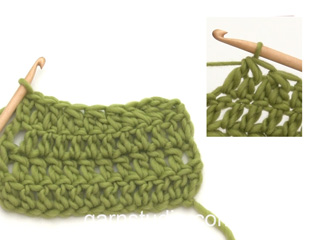



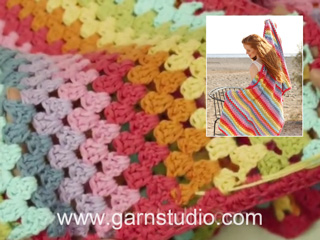

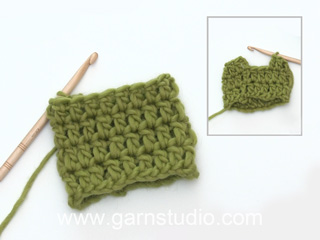
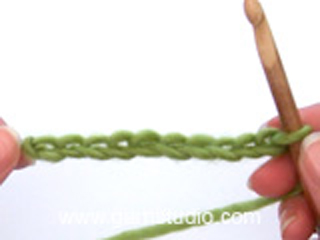

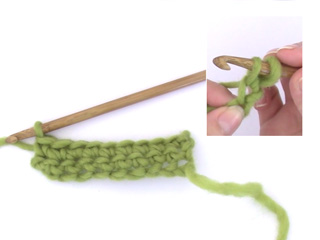

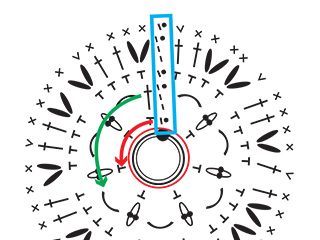




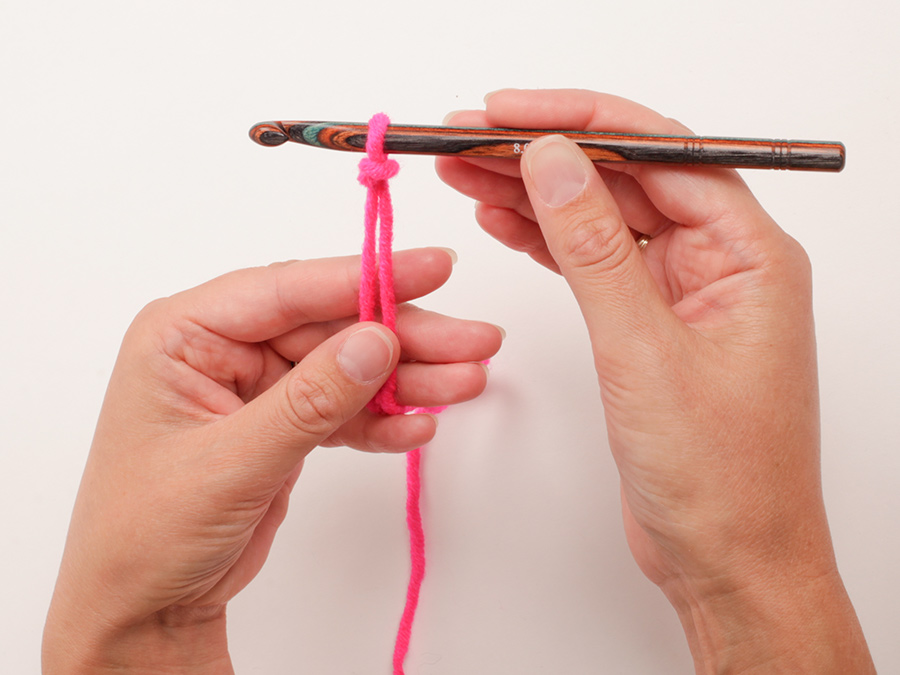

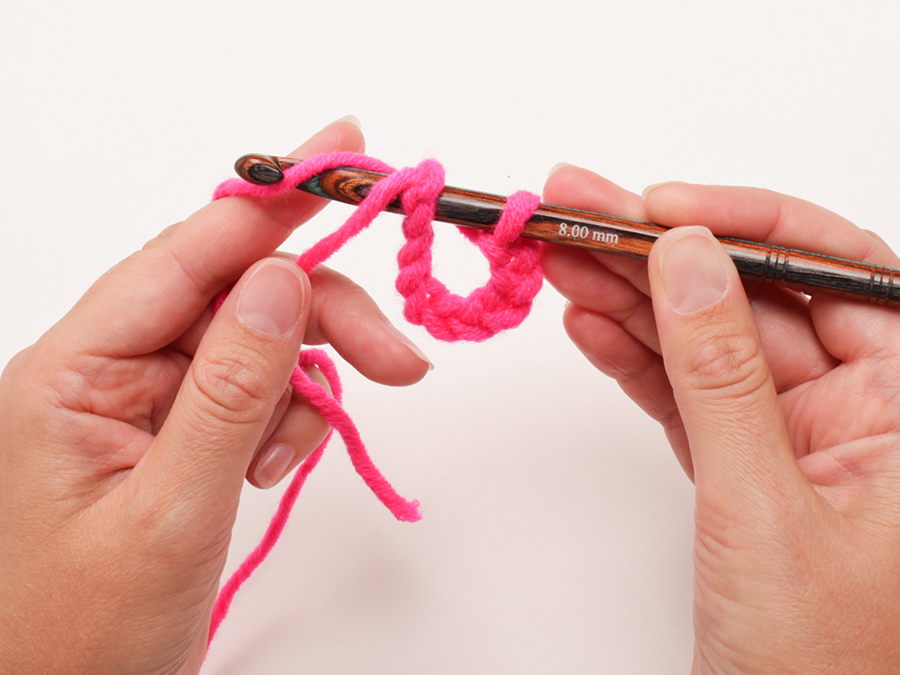
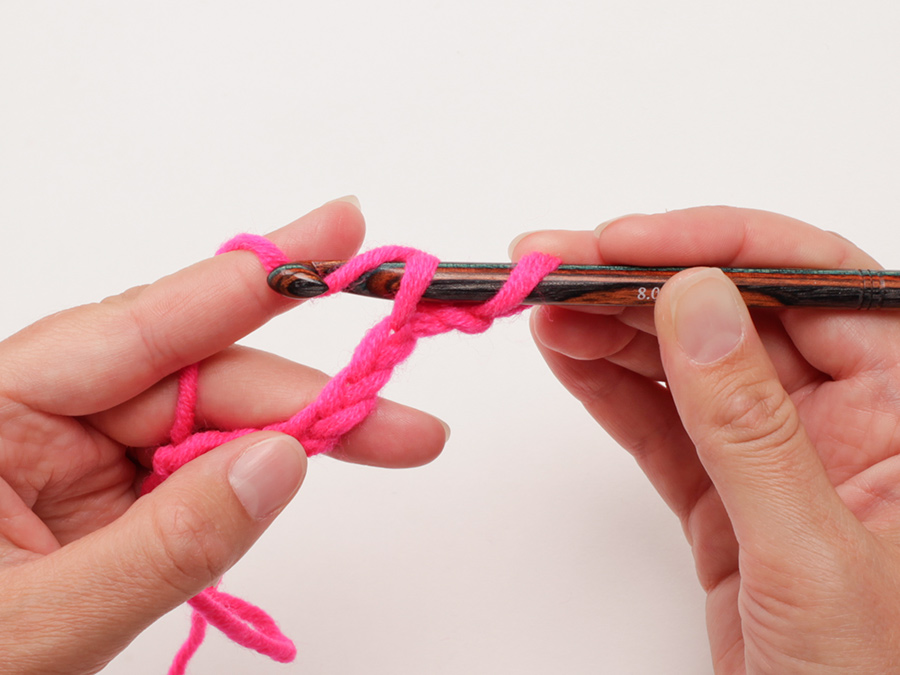
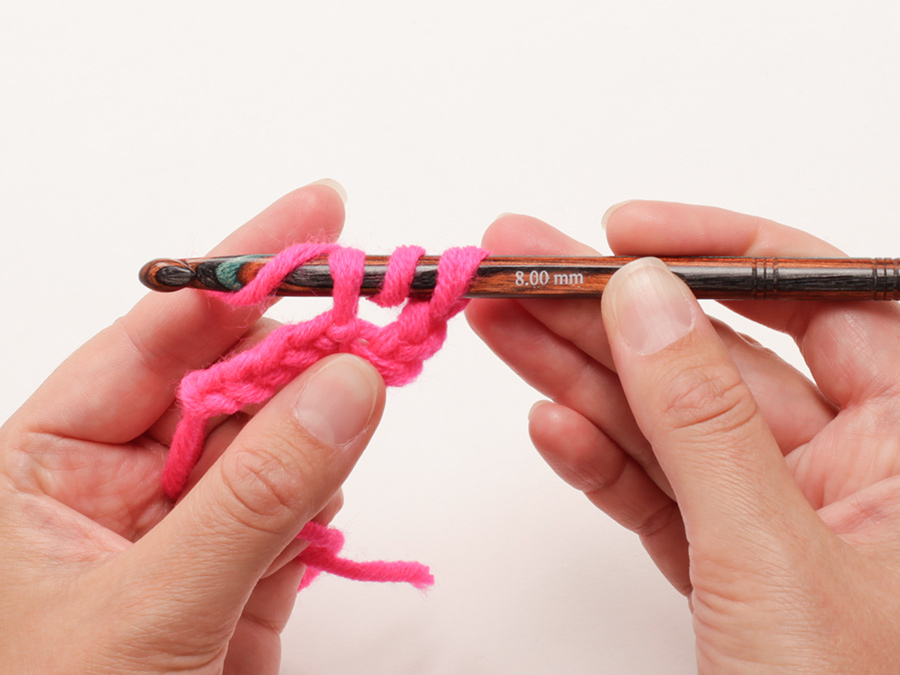






Comments / Questions (69)
Hallo, ich habe das ganze jetzt schon 4x aufgetrennt und neu angefangen und ich komme immer auf das selbe, mein Problem liegt in Reihe 6. In grösse M müsste ich mit den Zunahmen dann gesamt 216 Maschen haben, ich komme jedes Mal aber nur auf 196m. A2 13m + 2x A3 18m +A2 13m + 7x A3 54m sind 98m in der hälfte also 196 in der kompletten Runde. Was mache ich falsch?? :( hilfe
12.09.2024 - 15:44DROPS Design answered:
Liebe Katharina, so häkeln Sie die 6. Reihe mit gleichzeitig Zunahmen in jedem A.3: A.2: 18 M, A.3: 12 +6 M, A.2: 18 M, 1.3 42+12=54 M, A.2: 18 M, A.3: 12 +6 M, A.2: 18 M, 1.3 42+12=54 M, so haben Sie: 18+18+18+54+18+18+18+54=216 M. Viel Spaß beim Häkeln!
13.09.2024 - 09:20Bonjour, je crochète ce modèle en taille XXL et je suis arrivé au 10e rangs. Le patron comporte une mention concernant les tailles L, XL, et XXXL mais rien concernant le XL. Est ce que je dois prendre en compte les instructions concernant le 10e rangs ?
26.08.2024 - 21:26DROPS Design answered:
Bonjour Florent, simple typo, on doit lire ici XXL au lieu de XXXL, merci pour l'info qui va être corrigée. Bonne continuation!
27.08.2024 - 09:20Jeg er ved anden sidste række i A2 og str xxl
02.08.2024 - 11:42DROPS Design answered:
Hej Marianne, du tager ud ifølge A.2. Du starter med 4 masker i A.2 og når du har hæklet næst sidste række har du 33 masker, på sidste række tager du også ud ifølge diagrammet til 36 masker :)
06.08.2024 - 13:43Nu er jeg gået i gang igen. Nået til at jeg har 36 masker på ærmerne og 78 på for/ og bagstykke. Hvordan bliver det så lige pludselig 60 masker på ærmerne og 348 i alt
02.08.2024 - 11:16DROPS Design answered:
Hej Marianne, Vi vil gerne prøve at hjælpe dig! Hvilken størrelse hækler du? Hvor er du i opskriften og hvor mange masker har du?
02.08.2024 - 11:26Synes godt nok selve blusen er rigtig pæn. Men opskriften er mega træls med antallet af masker i felterne og diagrammerne 1-2-3-3a jeg har simpelthen opgivet den. Jeg plejer sagtens at kunne gennemskue jeres opskrifter
30.07.2024 - 16:28DROPS Design answered:
Hej Marianne, nej hvor synd, den består stort set kun af lm, st og fm.... og hver rapport er kun 6 masker .... :)
02.08.2024 - 10:53Non capisco come fare questa parte: "avviare 8-8-8-10-10-10 catenelle, saltare le maglie tra i 2 segnapunti (= 8-9-9-10-10-10 ripetizioni per la manica)". Come si fa a saltare tutte quelle maglie ma avere solo 8 catenelle?
26.07.2024 - 14:05DROPS Design answered:
Buongiorno GG, è la parte di divisione delle maniche, si saltano le maglie delle maniche e si avviano le maglie per il sottomanica. Buon lavoro!
29.07.2024 - 16:05Jag har virkat strl L tom varv 10 och har som det står då 288 maskor på varvet för strl L (och 300 i strl XL och 312 i XXL) Sen står det ”ALLA STORLEKAR: Virka tills A.2 är färdigvirkat på höjden.” Sen ska man flytta markörer och ta bort andra. Då ska jag ha 324 m i strl L (288 m gäller vad jag förstår där för storlek M). Står det fel eller var kommer de 36 m ifrån mellan varv 10 och 14?? Var ökar man från 288 till 324m?
16.07.2024 - 18:44DROPS Design answered:
Hej Ulla. Du har ökningar i A.2 mellan varv 10 och 14 så det är där de extra maskorna kommer ifrån. På varv 10 i A.2 har du 27 stolpar och på varv 14 har du 36 stolpar (dvs 9 stolpar mer). A.2 virkas 4 gånger på varvet, 9x4= 36. Mvh DROPS Design
18.07.2024 - 08:20Men det står ju i mönstret : ”öka samtidigt 6-6-12-12-12-12 maskor jämnt fördelat (= 42-48-54-60-66-72 maskor) *, virka *-* 1 gång till på varvet (= 12-24-36-36-36-36 maskor ökade) = 180-204-216-228-240-252 maskor på varvet.” Det betyder ju att det ska vara 180 efter ökningen med 6 maskor, det är det jag inte förstår.
09.07.2024 - 18:23Hej! Jag är klar med A2 och har för få maskor. Jag stickar xs och hade 180 stolpar efter varv 6 som jag skulle . Nu har jag 240 vilket borde vara rätt ( 36 gånger 4 = 144 plus 48 gånger 2 = 96 tillsammans 240) det står i mönstret att jag ska ha 252. Kan ni förklara ? Vänliga hälsningar Maria
04.07.2024 - 18:09DROPS Design answered:
Hei Maria. Når du har heklet A.2 ferdig i høyden har du etter 1. merketråd: A.2 (=36 masker) + A.3 (A.3 2 ganger =12 masker). Etter 2. merketråd A.2 (=36 masker) + A.3 (A.3 6 ganger = 36 masker). Etter 3. merketråd A.2 (=36 masker) + A.3 (A.3 2 ganger =12 masker). Etter 4. merketråd A.2 (=36 masker) + A.3 (A.3 6 ganger = 36 masker). Bare med tall: 36+12+36+36+36+12+36+36= 240 masker. Men husk de maskene som ble økt ved 6. omgang, 6 masker 2 steder = 12 masker. 240 + 12 = 252 masker. mvh DROPS Design
08.07.2024 - 11:44Bonjour Je ne comprends pas ceci : continue t'on A2 et A 3 comme avant, ou uniquement A2 ? Crocheter jusqu'à ce que A.2 est terminé Merci pour votre réponse. VIRIEUX Catherine Crocheter jusqu'à ce que A.2 est terminé
24.06.2024 - 22:01DROPS Design answered:
Bonjour Mme Virieux, vous crochetez les diagrammes en même temps, comme indiqué au préalable, autrement dit, vous continuez A.3 comme avant et vous continuez en même temps à crocheter A.2 en augmentant comme dans le diagramme (il restera les 5 derniers rangs de A.3a à faire), et lorsque A.2 est terminé, vous continuez en suivant A.3a, vous pourrez crocheter 6 fois A.3 au lieu de chaque A.2. Bon crochet!
25.06.2024 - 09:03